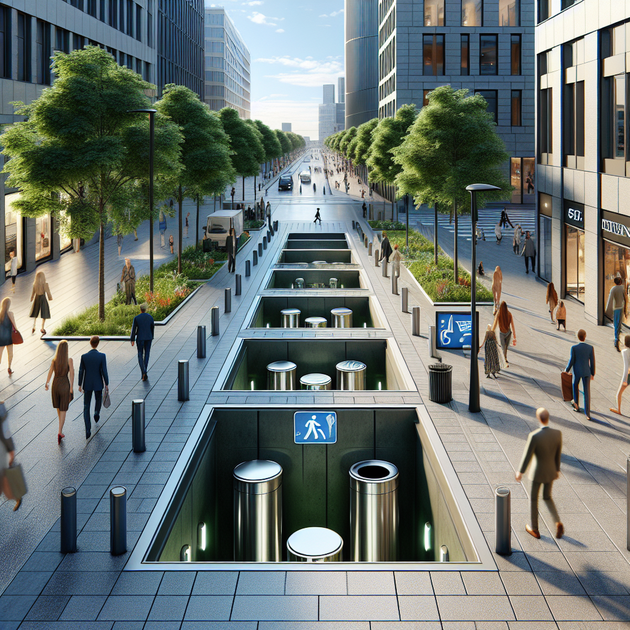What’s the secret behind those pristine Dutch streets? It’s not just a love for tidy sidewalks—it’s a clever solution hiding right under everyone’s noses (or, more accurately, feet). In the Netherlands, most public trash isn’t left out in the open. Instead, much of it disappears into sleek, modern bins that drop waste deep underground. Let’s take a closer look at how this “underground trash” system works and why more cities are taking notice.
Why Go Underground With Trash?
Overflowing bins and litter-strewn corners are common headaches for city dwellers everywhere. In many places, traditional garbage cans take up valuable sidewalk space and quickly become eyesores when they fill up. The Dutch approach flips this problem on its head by tucking away most of the mess.
Dutch cities use a network of hidden garbage bins—above-ground chutes that lead to large containers stored below street level. These units can hold several times as much as regular bins before needing emptying. That means fewer collections each week and far less risk of smelly piles or scattered debris.
How Does the Dutch Waste System Work?
Here’s what makes these underground trash containers so effective:
- Space-Saving: Containers sit below ground, freeing up walkways and parks.
- Odor Control: Cool temperatures underground help keep smells in check.
- Pest Prevention: Rats and birds can’t get at the buried garbage.
- Efficiency: Fewer trips for garbage trucks mean less traffic congestion.
- Sustainability: Many systems sort recyclables at the source.
Residents simply bring their bags to these modern chutes—often locked with a card or code for security—and drop them in. When the container is nearly full, sensors alert city services to schedule a pickup. This “smart waste collection” system cuts down on unnecessary trips and keeps neighborhoods looking sharp.
For more details on how advanced waste technology can help urban areas thrive, check out this overview from Smart City Lab, which covers global trends in smart waste management.
A Day in a Spotless Dutch City
Picture strolling through Rotterdam or Amsterdam on a sunny afternoon. Instead of dodging overflowing bins or stepping around stray wrappers, you notice something curious—public spaces are neat and inviting. The only sign of garbage collection is an occasional stainless steel chute near apartment blocks or parks.
A friend once shared her experience while visiting Utrecht. She’d finished a snack on her way to a museum but couldn’t spot any big dumpsters nearby. Instead, she found a discreet-looking bin labeled “restafval.” Dropping her wrapper inside felt almost too simple—no mess, no smell—and later she learned her little bit of rubbish was now part of an efficient subterranean chain that keeps the city beautiful day after day.
The Benefits Go Beyond Clean Streets
The impact of this hidden system is bigger than just looks:
- Better Hygiene: Less exposure to pests and bacteria means healthier communities.
- Quieter Streets: Fewer noisy truck pickups disrupt daily life.
- Civic Pride: People are more likely to keep spaces clean when they’re already spotless.
- Sustainable Urban Living: Integrated recycling makes it easier for residents to do their part for the environment.
It’s no surprise that other countries are watching closely—and some have started adopting similar approaches in their own cities as part of broader efforts toward sustainable urban living.
The Future of Urban Cleanliness?
The Dutch model proves that tackling everyday problems sometimes means thinking below the surface—literally. With growing populations putting pressure on urban infrastructure worldwide, solutions like these could be key for cleaner, greener cities everywhere.
Would you like to see an underground trash system where you live? Or do you think there’s another clever fix waiting just beneath our feet?

Leave a Reply